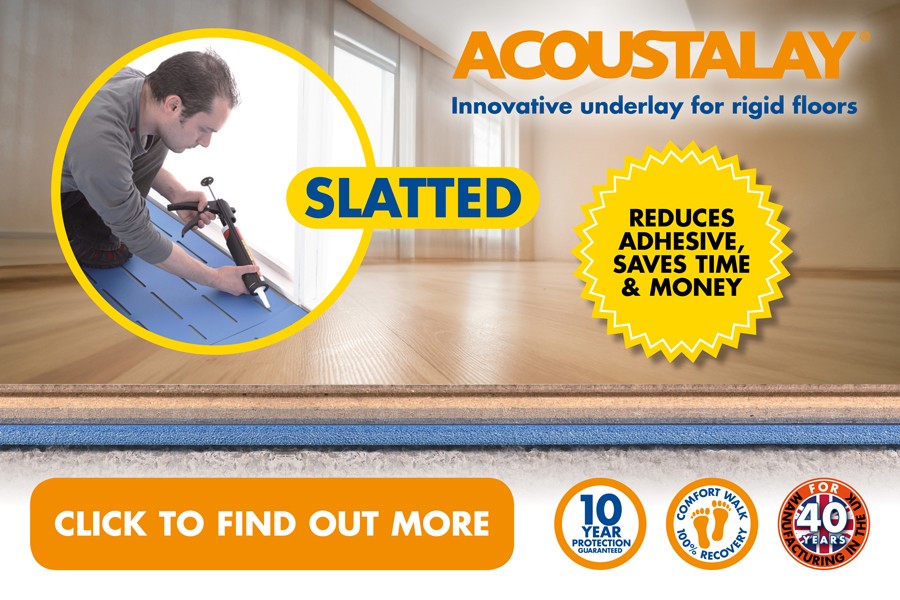Successful retail spaces rely on flooring that combines durability, design, and practicality while enhancing shoppers’ overall experience, says David Powell
WHEN it comes to flooring in shopping centres and retail environments, the range of materials available is extensive – vinyl, carpets, resins, real wood, and porcelain tiles, just to name a few. The chosen floorcovering should not only align with the corporate branding and aesthetic but, more importantly, must be fit-for-purpose.
Flooring in shopping centres and retail locations needs careful consideration due to high foot traffic, the need for durability, and the desire to create a positive customer experience. Key factors include durability, safety (slip resistance), aesthetics, ease of maintenance, and cost-effectiveness.
At Bostik, the technical team are frequently asked to support the installation of flooring systems for these demanding commercial environments. Based on our experience, here are some essential considerations every installer and specifier should consider:
Correct preparation
Proper preparation is non-negotiable. But what does it really mean?
Moisture
Moisture levels in the subfloor are critical, and, assuming it contains a ground structural damp proof membrane, British Standards require the following:
For resilient and textile floorcoverings, the subfloor is considered dry when a hygrometer reading of 75% RH or lower is achieved.
For natural wood, the recommendation is even stricter at 65%.
If readings are higher, the subfloor must be allowed additional drying time, or a suitable moisture control system must be installed. However, for wood flooring, I always advise checking with the specific wood flooring supplier, as individual product recommendations and requirements vary.
Contamination
In all instances, surface preparation must be undertaken to provide a solid, sound and smooth base that is free from undulation and suitable for the application of preparation products.
Prepare the existing subfloor using appropriate mechanical surface preparation equipment to remove any weak friable surface layers, such as laitance, dust, dirt, curing agents, resinous coatings, power float finishes, and any loose friable material or any other contamination likely to impair adhesion. After preparation, the surface should be thoroughly vacuumed using industrial vacuum equipment.
Even small fragments left over from other trades or offcuts, or flooring shreds, can prevent proper adhesion. Always thoroughly clean the subfloor to ensure bonding is not compromised.
Application temperature
The Contract Flooring Association (CFA) recommends a specific temperature range for installing flooring to ensure optimal performance and prevent issues like adhesive failure or material damage. Generally, a steady work area temperature between 18°C and 27°C should be maintained for at least 24-48 hours before, during, and 24 hours after installation.
Low temperatures, especially in winter, can impact both smoothing compounds and adhesive setting times. Always consider the ambient temperature during installation and ensure it falls within the product’s recommended application range.
Other technical considerations
Rolling loads
Retail environments often host heavy fixtures, from display units to pianos. These require adhesives and smoothing compounds that offer high shear strength and durability under constant rolling loads.
High solar gain
Areas exposed to strong sunlight, like restaurant frontages or atriums, should use adhesives rated for high solar gain to prevent flooring deformation.
Adhesive
When there’s a positive collaboration between architects, manufacturers and installers, you get the best installation possible. Bespoke recommendations work best.
There are now several potential adhesives that could be used on resilient and textile commercial flooring. However, four main types are regularly used within the industry: epoxy, polyurethane, acrylic, and pressure-sensitive adhesives, as well as a range of cementitious tile adhesives.
Porcelain tiles
Tiles must be solid-bedded into adhesive to help prevent cracking under point loads (to help achieve a solid bed fixed, back buttering the tiles with a thin layer of tile adhesive is recommended).
For tiles larger than 600mm x 600mm, use a minimum 3mm grout joint width.
Expansion joints must never be bridged with tiles. Failing to carry expansion joints through to the tile surface can lead to cracking along those lines. Use suitable movement profiles.
Sustainability and innovation
Downtime and waste are common concerns during retail refurbishments. Adhesive systems, such as Bostik R3BOND SYSTEM, address these issues directly. These systems use high levels of bio-based content and incorporate features like a separating grid to help prevent contamination of flooring materials, supporting their recyclability at the end of life. They also leave the subfloor in excellent condition with minimal preparation required, shortening renovation times and lowering the overall environmental impact.
Flooring in retail and shopping centre environments is more than just surface-level – it must deliver performance, safety, durability, sustainability and visual impact. With the proper preparation, specification, and innovative solutions, retailers can ensure a flooring installation that lasts, looks great, and reduces environmental impact.
david.powell@bostik.com
www.bostik-profloor.co.uk
David Powell is technical consultant at Bostik UK


